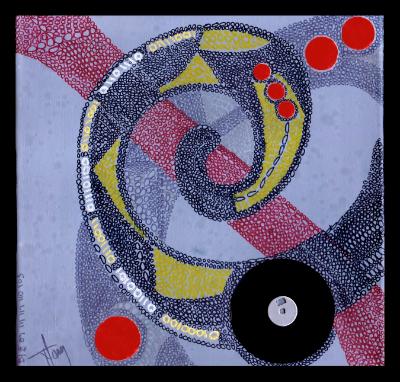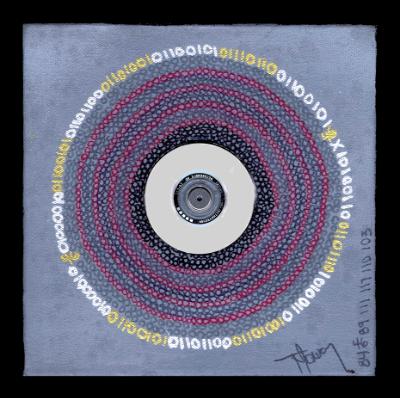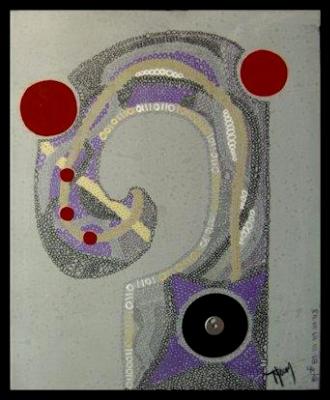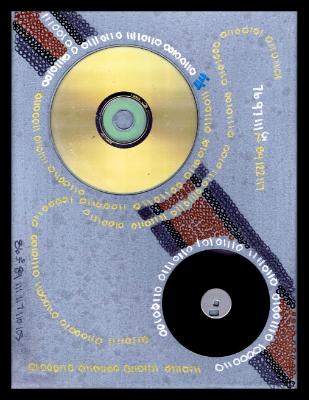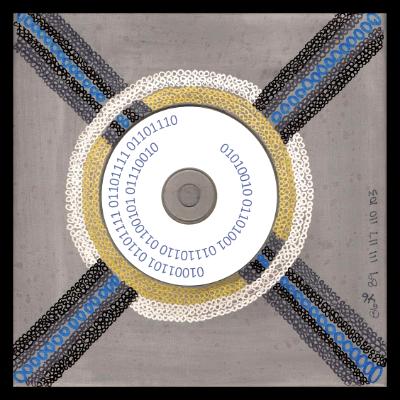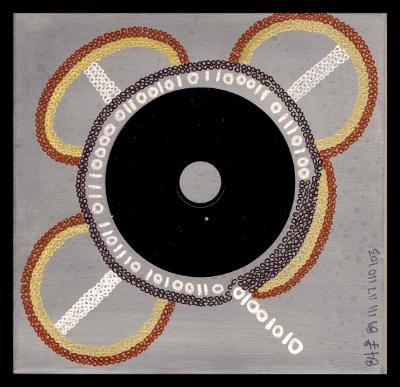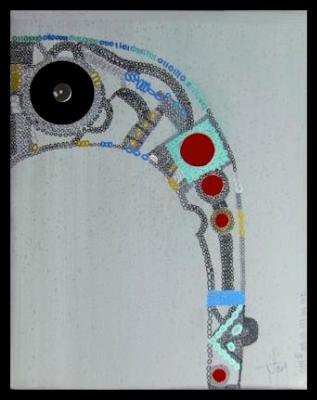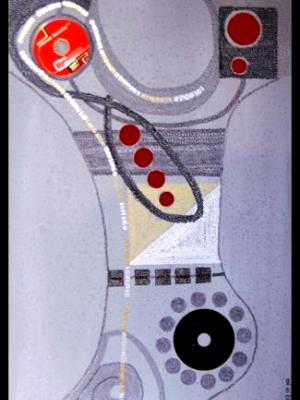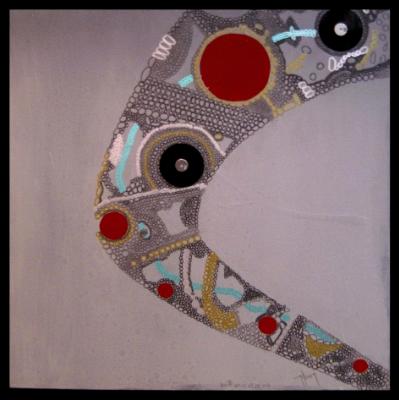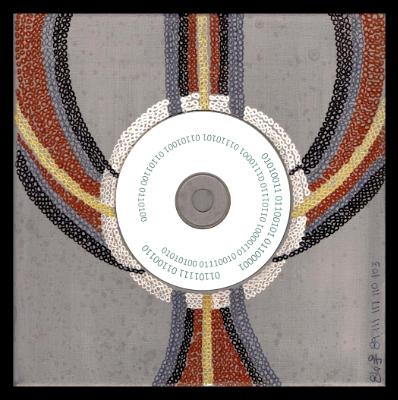Series:Binary & Infinity-The Infinite Language of Computers 2012Click an image to enlarge Binary & Infinity – The Infinite Language of Computers So much of what we do in our lives is based upon mathematical computations, equations or theories – Even art is based on math! Language which is a system created of formalized symbols, signs, sounds or gestures in order to communicate needs, wants, story, direction, etc. has been developed from the earliest use of hieroglyphs, verbal and nonverbal communication and has evolved through the centuries in a structured, thought out way. Computer language is just another variation of a language and another method in the vast number of ways humanity communicates in our world. The idea of combining numbers and language based on computers in an art series was interesting to me. I decided to translate and use a word, phrase or saying as a binary number or code in each painting. Binary code, simply defined is a way of representing text or computer processor instructions by the use of the binary number system's two-binary digits 0 and 1. This is accomplished by assigning a bit string to each particular symbol or instruction. A binary string of eight binary digits (bits) can represent any of 256 possible values and can therefore correspond to a variety of different symbols, letters or instructions. For example, this is the lowercase "a" as represented by the bit string 01100001. I also decided to incorporate circles within the painting which allowed the graphic design structure to stand out and create a graphic effect. These circles would represent the infinity symbol (∞). Infinity refers to something without any limit. The idea of combining the term and symbol of infinity into this project seemed natural as infinity is a concept relevant in a number of fields, predominantly mathematics and physics. Binary code is mathematical and the technology behind computers and what they represent in history; past, present and future is without limit. This project is both simplistic and complicated. The graphic design is simple as it is based on an artistic level; which is easier to relate or identify with. Computer coding (computer science), is a bit more complicated and harder to define or even understand in simple terms; this language works behind the scenes and is not as transparent, definable or interpretable in a manner that most language is. I wanted this series to present in a simple manner with artistic design but also wanted to draw attention to this hidden, often complicated language that is used on a daily basis. I started sketching and laying out my idea for this series in March 2012 and completed a total of 14 paintings in seven months. These paintings are in a variety of sizes, the smallest being 8x8 inches and the largest is 30x30 inches. The color scheme of each painting is based largely on a monochromatic color system in varying degrees of gray and black hues, which represents the lack of color in digital programming. I’ve incorporated a bit of color such as red, blue, purple, green, gold, silver or white for additional texture as a way to separate particular parts (partitions) of the painting from one another and give the painting a greater depth. The background is in flat gray and has a faint splattered effect to give imagination to a dropping or trickling of computer symbols or coding in the background. I used ink for all the drawing and incorporated additional items, mixed media into each painting. I’ve attached cutouts of glossy red circles to depict strength or power. I used parts of portable digital storage such as the inside of a 5.25 inch floppy disk (1976), the inside portion of a mini disk (1992) and the traditional CD-ROM (released in the U.S. in 1983). These parts were used to symbolize one of the many ways that data would be recorded, saved and be portable. Each piece is signed with my signature T.Young in written form and in ASCII code, the decimal equivalent of the binary number (84 46 89 111 117 110 103), ASCII is an acronym for American Standard Code for Information Interchange and is another type of coding scheme used in computer science. All paintings are framed in a black float frame which represents confinement and gives structure or organization to each painting. The project, a bit geeky allowed me the opportunity to create something artistic using my knowledge and fascination of computers and to visually capture what has become so common place in our society. One can look at this body of work and think as deeply or superficially as desired – for me, it’s meant to be nothing more than a way of expressing how I see and feel about math, computer science, technology, language and how it fits into my life in an a creative, artistic manner. The past explorer’s of computer science and their influence and discoveries are deeply rooted and entwined in our culture – it is an infinite journey to say the least. If you see a piece you are interested in acquiring, send a message to Tracy Be the first to post a comment. |


